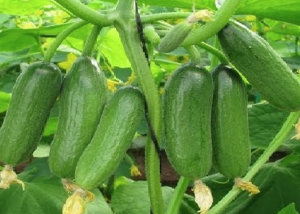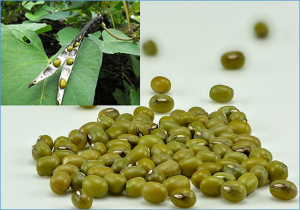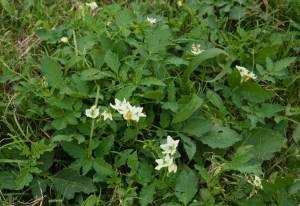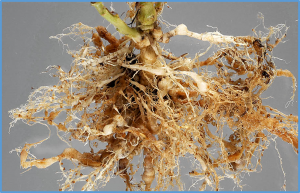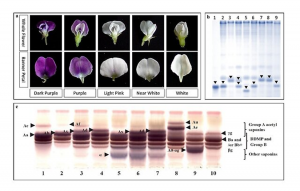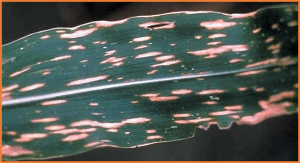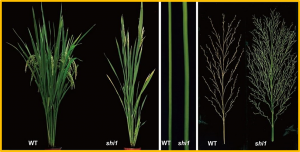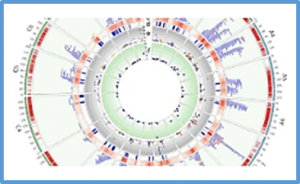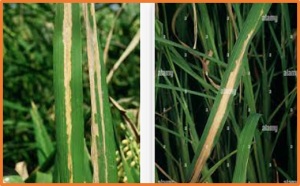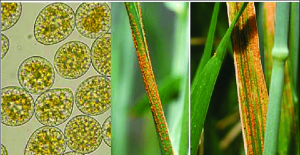Evaluation of cucumber UBL5 promoter as a tool for transgene expression and genome editing in plants
Transgene expression and genome editing can help improve cucumber varieties to better respond to climate change. This study aimed to evaluate the applicability of the CsUBL5 promoter in transgene expression and genome editing in cucumber. The CsUBL5 promoter was cloned and analyzed to identify cis-elements that respond to abiotic signals, hormones, signal molecules, and nutrient treatments
YUCCA, belonging to the class B flavin-dependent monooxygenases, catalyzes the rate-limiting step for endogenous auxin synthesis and is implicated in plant-growth regulation and stress response. Systematic analysis of the YUCCA gene family and its stress response benefits the dissection of regulation mechanisms and breeding applications. In this study, 12 YUCCA genes were identified from the mungbean (Vigna radiata L.) genome and were named based on their similarity to AtYUCCAs. Phylogenetic analysis revealed that the 12 VrYUCCAs could be divided into 4 subfamilies.
Wild potatoes are a valuable source of agronomic traits. However, substantial reproductive barriers limit gene flow into cultivated species. 2n gametes are instrumental in preventing endosperm abortion caused by genetic imbalances in the endosperm. However, little is known about the molecular mechanisms underlying the formation of 2n gametes. Here, the wild species Solanum malmeanum Bitter (2x, 1EBN, endosperm balance number) was used in inter- and intrapoloid crosses with other Solanum species
Five species of root-knot nematodes (RKN), Meloidogyne spp. (M. haplanaria, M. incognita, M. floridensis, M. javanica, and M. arenaria) were detected in 67% of vegetable-growing regions in Georgia, United States (Marquez et al. 2021a, b; Marquez and Hajihassani 2022a, b). In October 2021, two sweet potato (Ipomoea batatas) samples (FF1 and FF2) collected at harvest from a field located in Tattnall County, Reidsville, GA were received for assessment. Symptoms of RKN damage on storage roots included a veiny appearance, surface cracking, and bumpy yellow to brown colored specks (Fig. 1). The population density of RKN second-stage juveniles (J2) was 148 and 180 J2/100 cm3 of soil for FF1 and FF2 samples, respectively.
Shade tolerance is a key for optimal cultivation of soybean inter/relay-cropped with corn. To explore the shade tolerance gene–allele system in the southern China soybean germplasm, we proposed using gene–allele sequence markers (GASMs) in a restricted two-stage multi-locus model genome-wide association study (GASM-RTM-GWAS). A representative sample with 394 accessions was tested for their shade tolerance index (STI), in Nanning, China.
Southern leaf blight caused by fungal pathogen Cochliobolus heterostrophus is a destructive disease on maize throughout the world. Argonaute (AGO) proteins, key regulators in small RNA pathway, play important roles in plant defense. But whether they have function in maize resistance against C. heterostrophus is unknown. Association analysis between the nucleic variation of 18 ZmAGO loci with disease phenotype against C. heterostrophus was performed,
Plants experience a changing environment throughout their growth, which requires dynamic adjustments of plant architecture in response to these environmental cues. Our previous study demonstrated that Tiller Angle Control 1 (TAC1) modulates dynamic changes in plant architecture in rice; however, the underlying regulatory mechanisms remain largely unknown. In this study, we show that TAC1 regulates plant architecture in an expression dose-dependent manner,
Seed weight (SW) is a direct determinant of seed yield in Brassica napus and is controlled by many loci. To unravel the main genomic regions associated with this complex trait, we used 13 available genetic maps to construct a consensus and highly dense map, comprising 40,401 polymorphic markers and 9191 genetic bins, harboring a cumulative length of 3047.8 cM.
Rice bacterial leaf blight (BLB) is the most destructive bacterial diseases caused by Xanthomonas oryzae pv. oryzae (Xoo). Phages have been proposed as a green and efficient strategy to kill bacterial pathogens in crops, however, the mechanism of action of phages in the control of phyllosphere bacterial diseases remain unclear. Here, the glasshouse pot experiment results showed that phage combination could reduce the disease index by up to 64.3%.
Puccinia striiformis f. sp. tritici, causing wheat yellow rust (YR), is one of the most devastating biotrophic pathogens affecting global wheat yields. Owing to the recent epidemic of the PstS10 race group in Europe, yellow rust has become a reoccurring disease in Norway since 2014. As all stage resistances (ASR) (or seedling resistances) are usually easily overcome by pathogen evolution, deployment of durable adult plant resistance (APR) is crucial for yellow rust resistance breeding.


 Curently online :
Curently online :
 Total visitors :
Total visitors :
